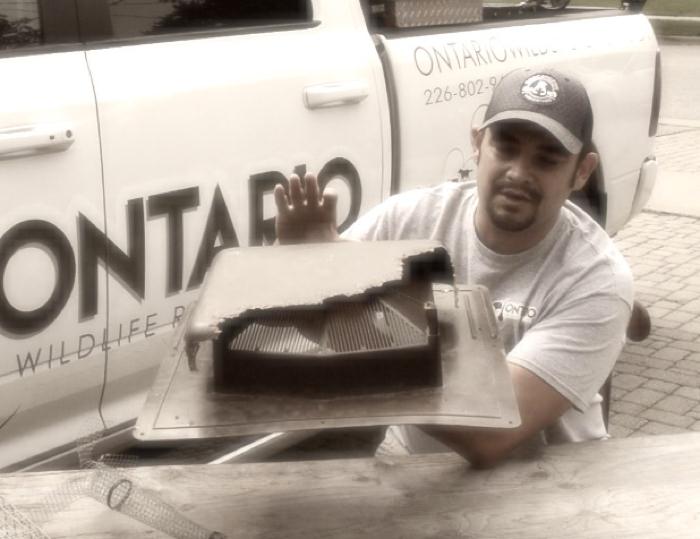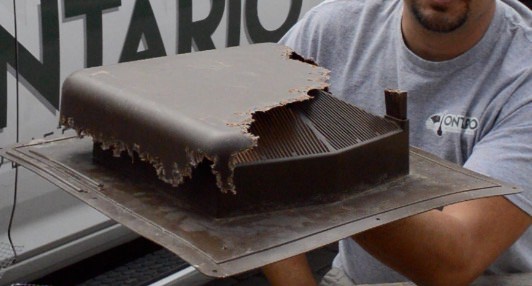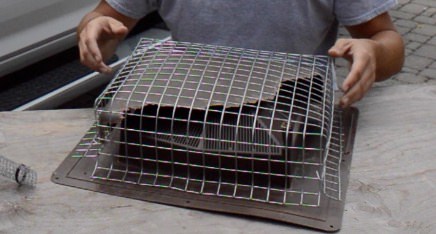
Short History of Pest Control and Wildlife Removal
Posted by Jared Houliston Thursday, October 6th, 2016 | 3,572 Reads
 Today I want to talk a little about the history of pest control in Ontario and how it’s evolved over the years. I myself have been providing pest control services to home owners in the Brantford and Kitchener areas for quite a long time, and my experience has helped me refine the services I offer, and to get a glimpse of how the service has evolved. It’s been quite interesting journey to say the least.
Today I want to talk a little about the history of pest control in Ontario and how it’s evolved over the years. I myself have been providing pest control services to home owners in the Brantford and Kitchener areas for quite a long time, and my experience has helped me refine the services I offer, and to get a glimpse of how the service has evolved. It’s been quite interesting journey to say the least.
Second to bat control is raccoon and squirrel removal which come in at a close second with respect to the number of calls we get for removal services.
So I decided it would be a good idea to educate home owners as to the history of wildlife removal in Ontario, and how, over time, new laws were introduced to protect animals while strategies were developed and took shape that ensured wild animals couldn’t break their way back into attics again.
Watch the video below where you’ll hear a brief history of pest control in Ontario and if you’re interested you can read the transcript below:
Transcript of video
So there was an actual job where I was in an attic in Brantford here and the lady told me that her husband rigged this contraption up in their attic in the year 1959 in order to catch a squirrel that was living in their attic. It was actually amazing to be able to check out the ingenuity in the contraption.
What they do with the trap is prop the trap door open with a small wire (just like a common mouse-trap) and attach a marshmallow to a wire on the inside of the trap. Once the raccoon or squirrel made the slightest movement with the marshmallow, that would trigger the wire to let go, and pull the trap door shut. See the image below:

So I humbly asked the home owner if I could have the old trap so I can show you what home owners had to do to capture wildlife or pests over a 50 years ago.
These days it’s not so hard to get a trap. You can call an array of wildlife control companies who can get you one, but today I want to show you why you don’t need, nor should use a trapping method anymore and why it’s not effective at keeping critters out permanently.
With traps, of course one can catch a wild animal, but trapping doesn’t tell you how the animal got into your attic, nor does it tell you the various susceptible entry points they’re using to get into your home.
So as an example, after the owner of the antique trap caught and released and released the squirrel, they weren’t familiar with the idea of looking on the roof and around the home for obvious entry points or damaged property. Later they found they had another intrusion and we informed them of wildlife prevention services which only made sense to them.
 An example of a chewed out roof vent
An example of a chewed out roof vent
This is an image of a roof vent that was chewed out by a squirrel. As you can see, the squirrel chewed all around the roof vent to gain access to the attic. The problem here was that the home owners thought their wildlife problems were going to be over with after catching the animal but, they neglected to look around the home to find damage, repair the damage and of course set up pest control against future entries.
In the case of damage to a roof vent to this extent, they experienced water damage as well because the hole in the roof vent allowed rain and moisture to get in. This is where costs start to rise.
Fast forward to 2016
 So let’s fast forward to 2016 where wildlife control has come a long way. These days we would get a phone call from a customer who’s realized they have an animal problem and in a case like the previous one, they’ve found their roof vent has been chewed out.
So let’s fast forward to 2016 where wildlife control has come a long way. These days we would get a phone call from a customer who’s realized they have an animal problem and in a case like the previous one, they’ve found their roof vent has been chewed out.
What we would do is create a custom screen and place it over top of the damaged vent or other parts of the roof that have been damaged. This keeps the animal from further getting back in to the attic and doing more damage to the property.
We then apply a custom exit screen which allows the wildlife to leave the attic but not get back in. This contraption is called a one-way door. A one way door is a humane eviction tool. Once it’s installed, after a day or two the squirrel will leave the attic to forage for food, exit the one-way door and then be on it’s way permanently.
Once we’ve determined the animal has left the home or attic we remove the screens and the damaged vents, and we install new vents. Thereafter we install the preventative screening again.
Laws applicable to wildlife and pest control
One thing that’s evolved through the history of pest control and wildlife removal are the laws with respect to handling and relocating animals. These laws have been enacted to protect the wildlife and protect the home owner, especially animals that are considered endangered.
The Ministry of Natural Resources says that pest control companies are not permitted to trap and relocate in Ontario farther an 1 kilometre from the animal’s den site. There are certain animals that pest control companies are permitted to relocate but in general it’s not a good practice.
In our opinion these laws are just and help preserve the lives of animals and are a part of what makes our country great.
For more information about how we handle each species of wildlife with respect to removal and prevention visit our pest control services page for more information and feel free to get in touch with us with any of your questions.
Ontario Wildlife Removal Inc. provides wildlife removal and pest control in Southwestern Ontario, including Brantford, Kitchener-Waterloo, Cambridge, Guelph, London, Woodstock, Tillsonburg, Simcoe, Port Dover, Paris, St. George, Six Nations, Caledonia, Burlington, Waterdown, Oakville, Hamilton, Stoney Creek, Grimsby, & Niagara Region. Our methods are safe, humane and environmentally friendly. Call today to book your inspection.
Get a Pest Control Quote
Simply fill in your details below and we'll call you very shortly to discuss your issues.





Leave a Reply